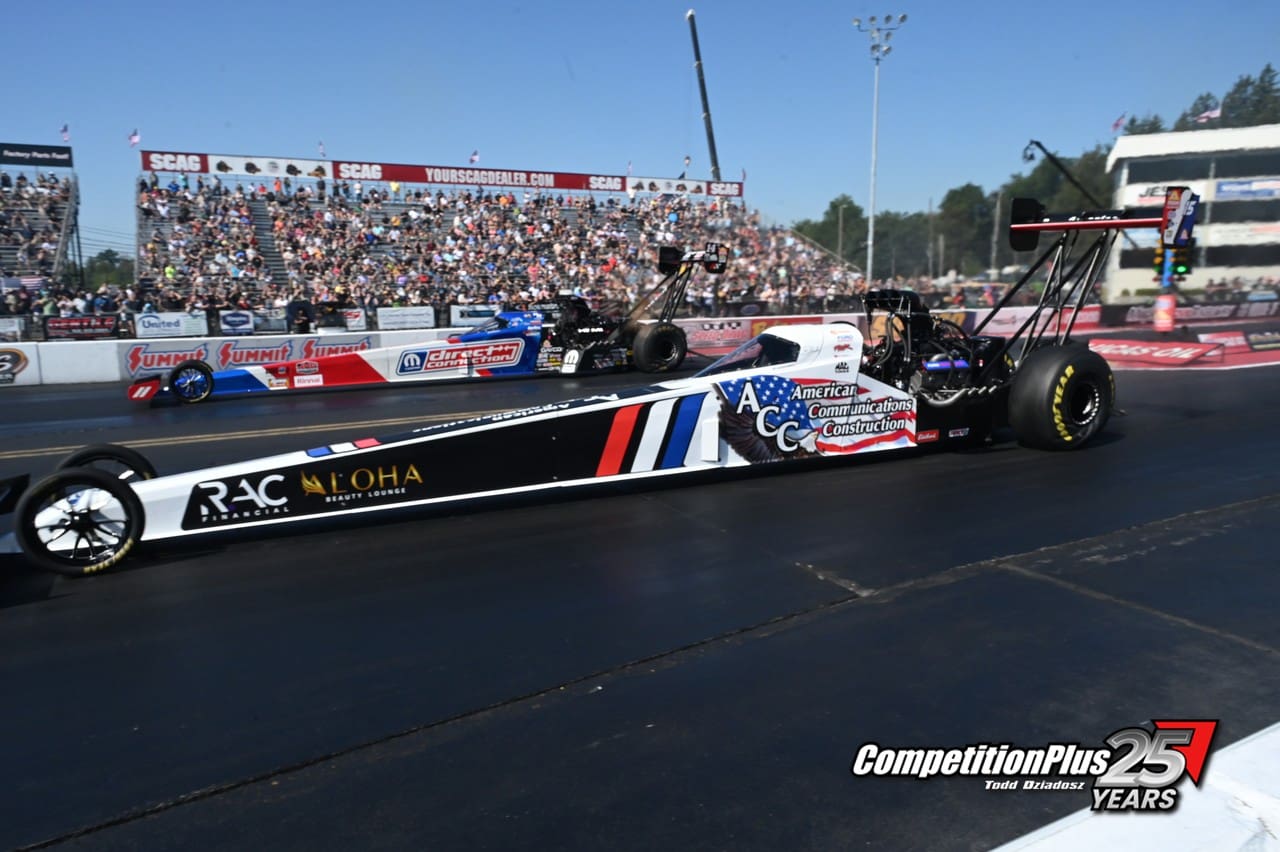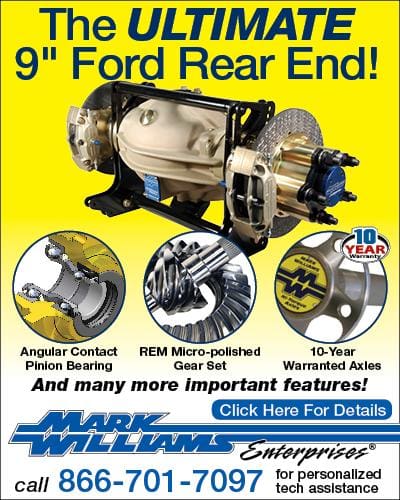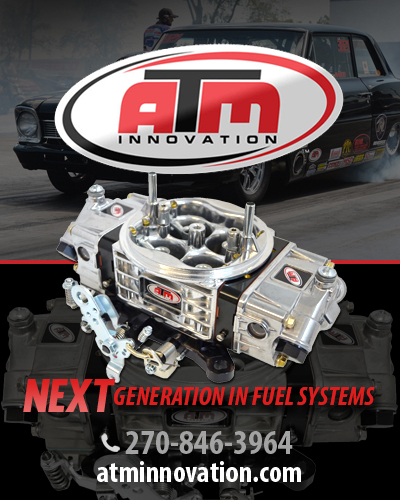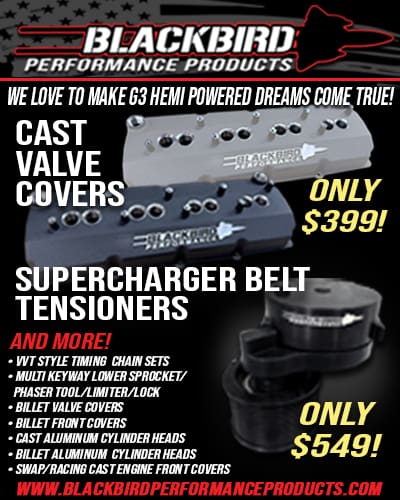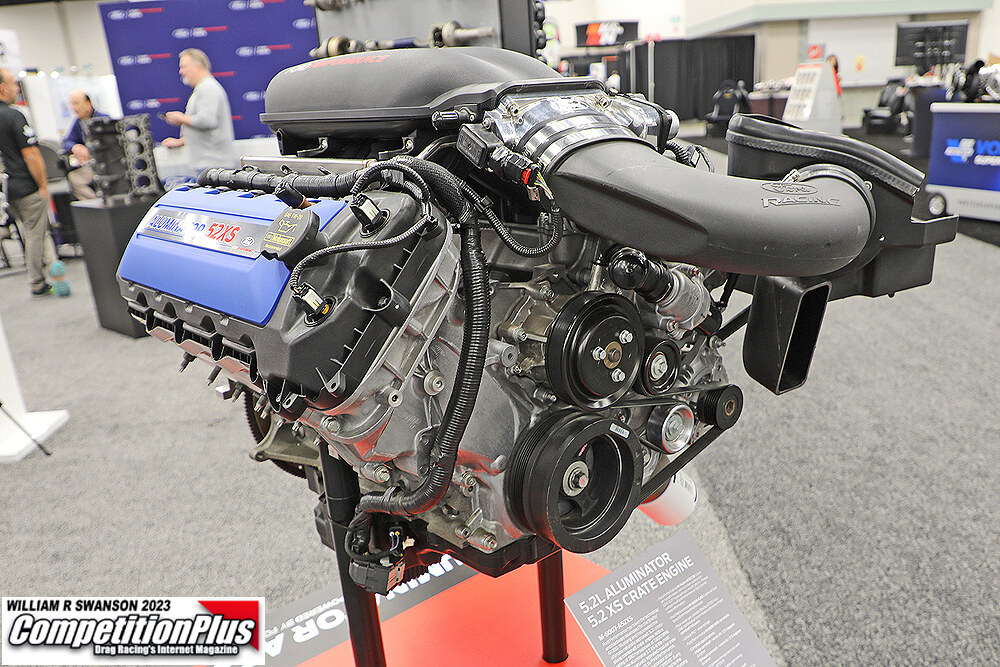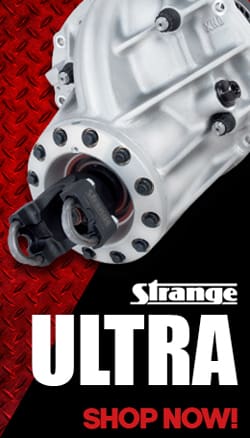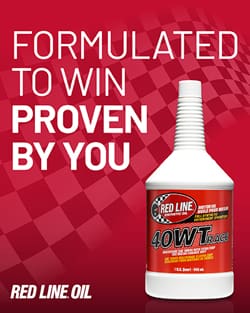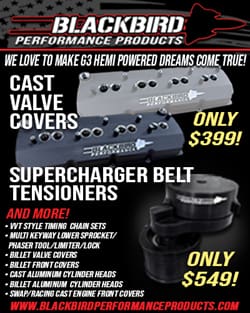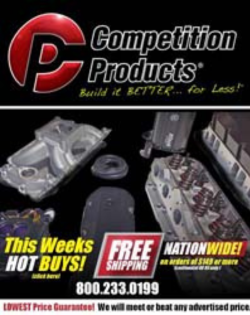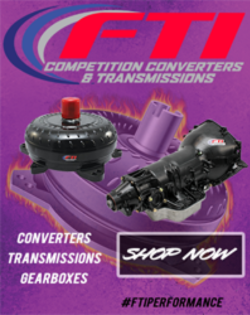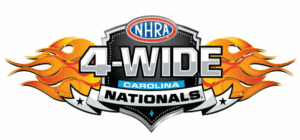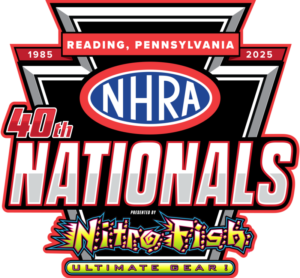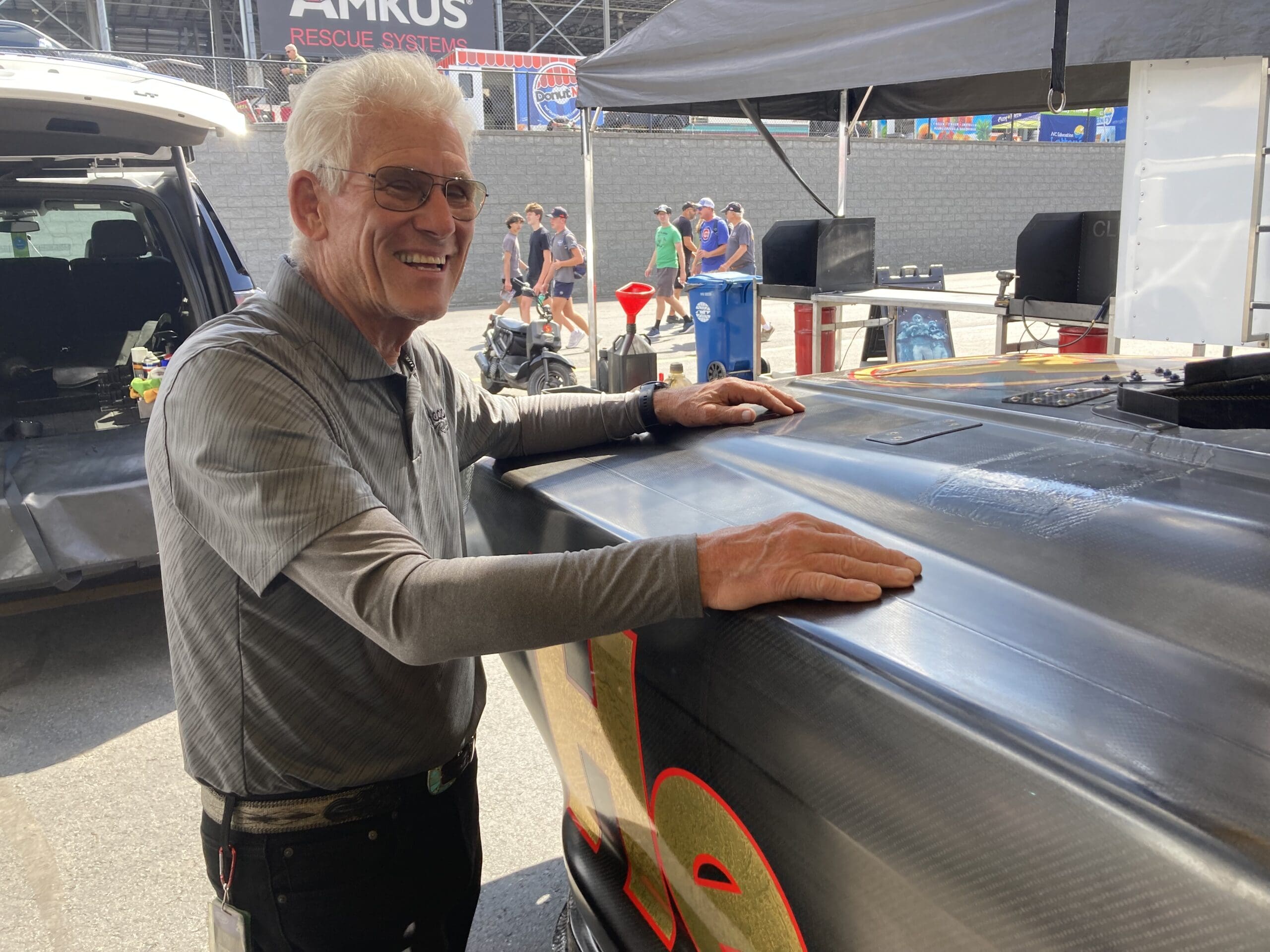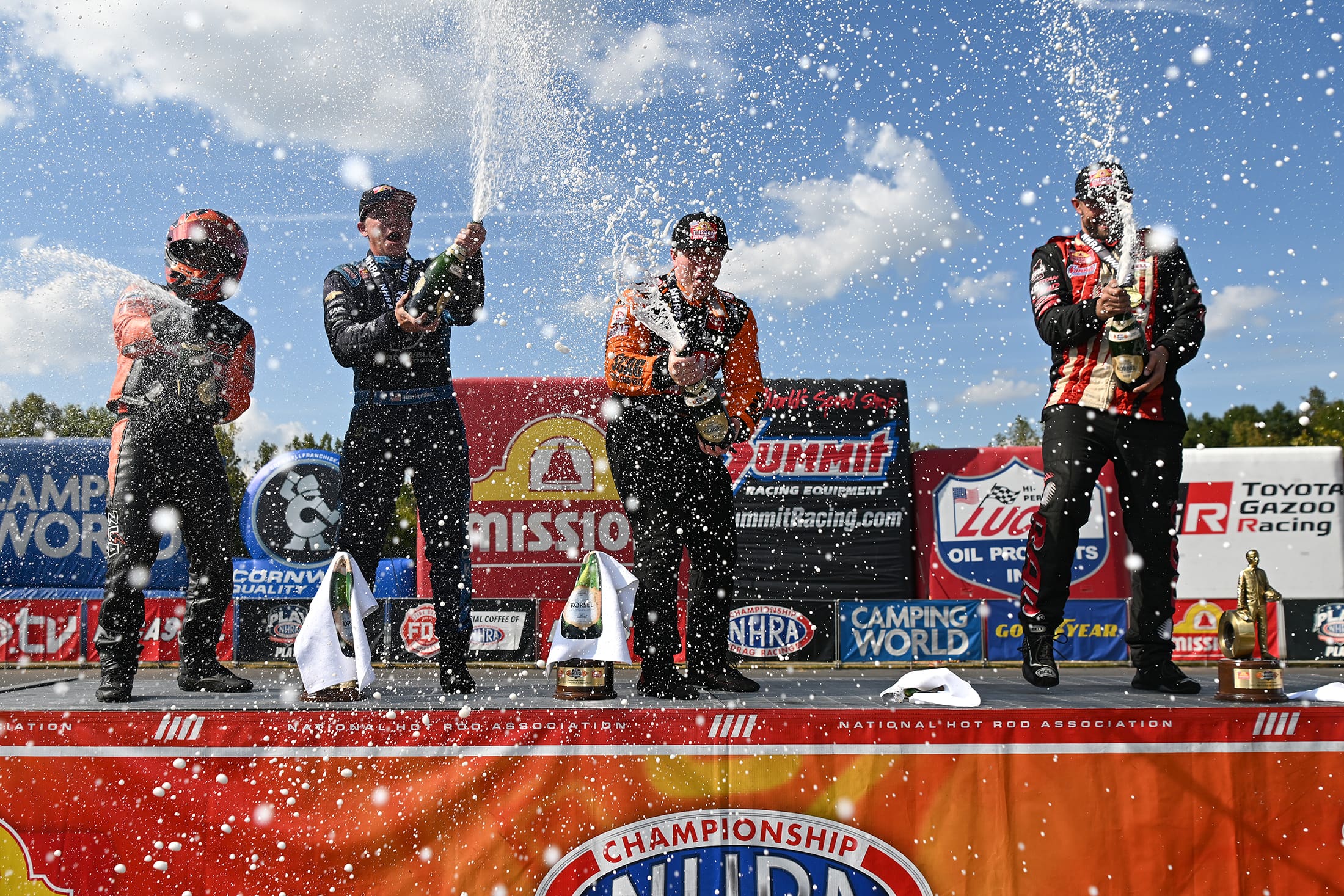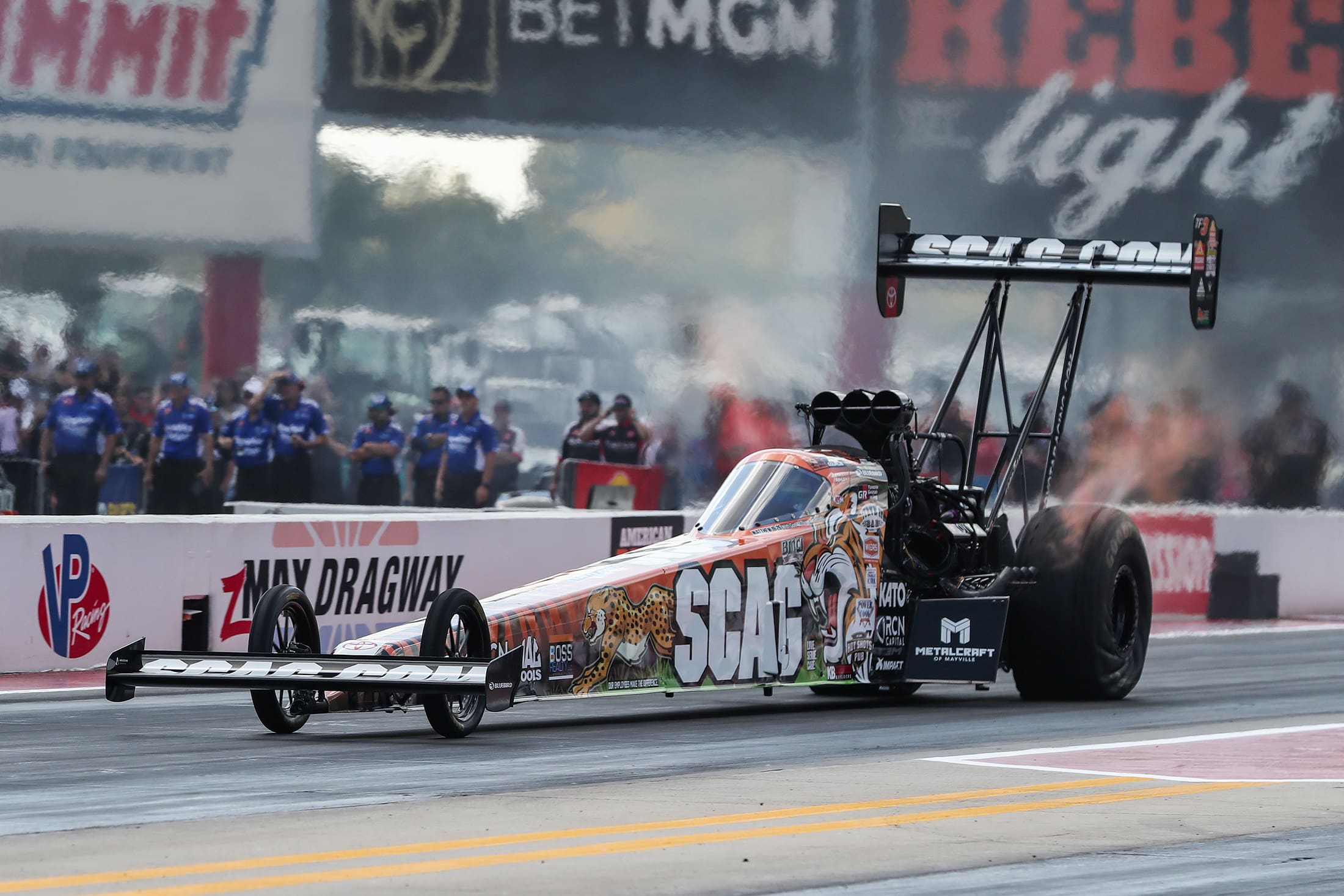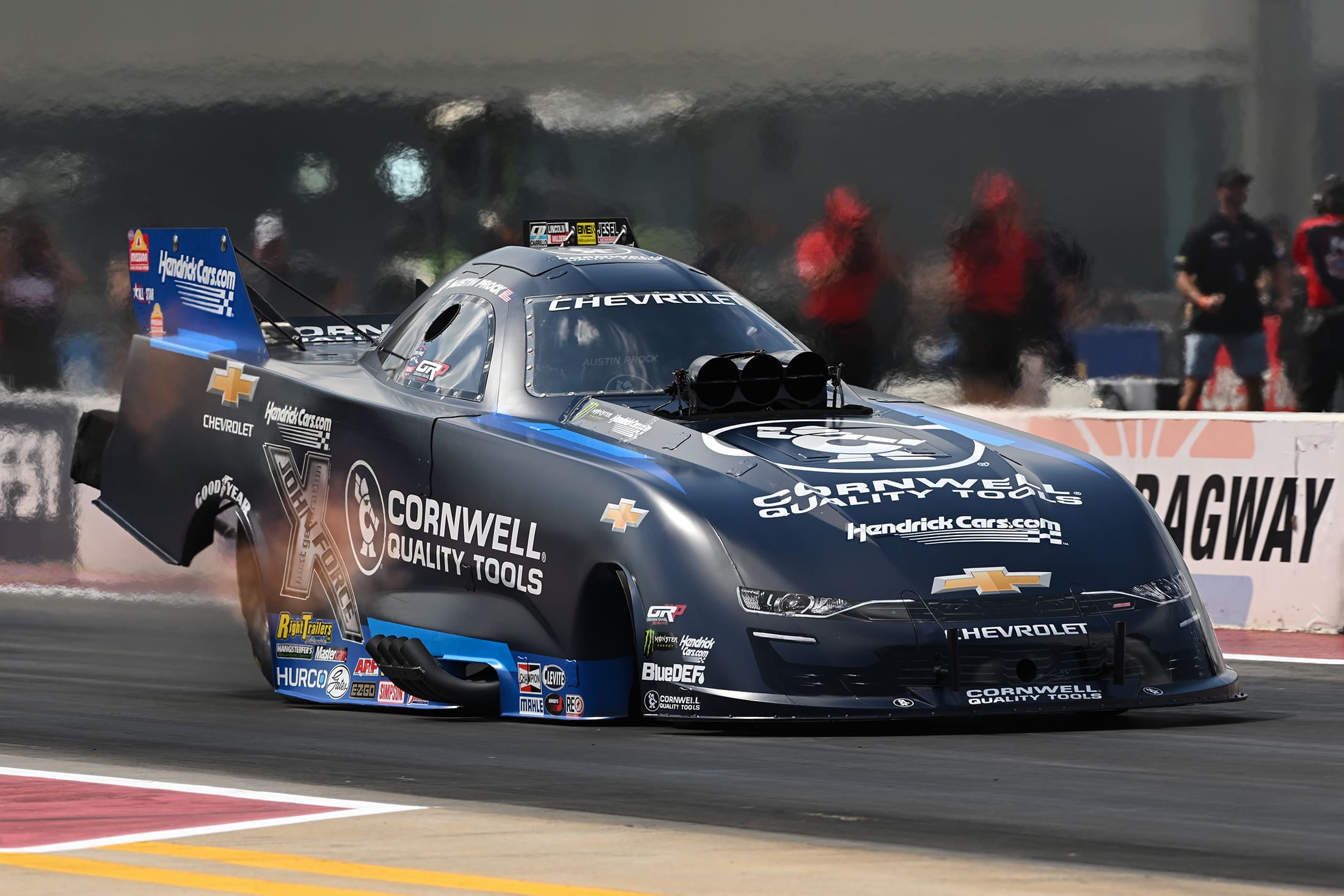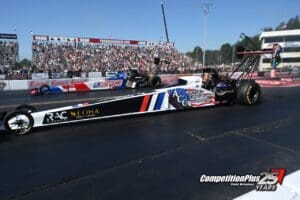What started as a ripple in the water turned into a full-blown tidal wave during the Fox Sports broadcast on Sunday at the NHRA 4-Wide Carolina Nationals.
These are the facts amid a community reluctant to speak out. On Sunday, Antron Brown warned NHRA’s Technical Department and management that a tsunami was brewing in the sometimes treacherous waters of major league drag racing.
The ripple began one race earlier at the NHRA Nationals in Reading, Pa., when, during an NHRA post-race tech inspection, according to NHRA, Tony Stewart’s Top Fuel Dragster was found to have a non-approved component, resulting in a disqualification of his Q-4 run.
Where the ripple began, there was no known mention by NHRA of the disqualification to the media covering the race, which is usually the series’ protocol when a run is disqualified. As late as September 22, 2025, there were no adjustments to the bonus points or the run notes on DragRaceCentral.com [DRC] stating any run was disqualified. In the past, runs disqualified were posted by DRC, which has stringently covered the series.
The NHRARacer.com post was made on September 19, 2025, and the run in question took place on September 13, 2025.
The same day, NHRA’s tech department issued a statement regarding clarifications, but later revised the statement, reportedly based on feedback and questions from teams.
Multiple teams have told CompetitionPlus.com the cloak of secrecy speaks volumes about NHRA’s transparency towards those they serve.
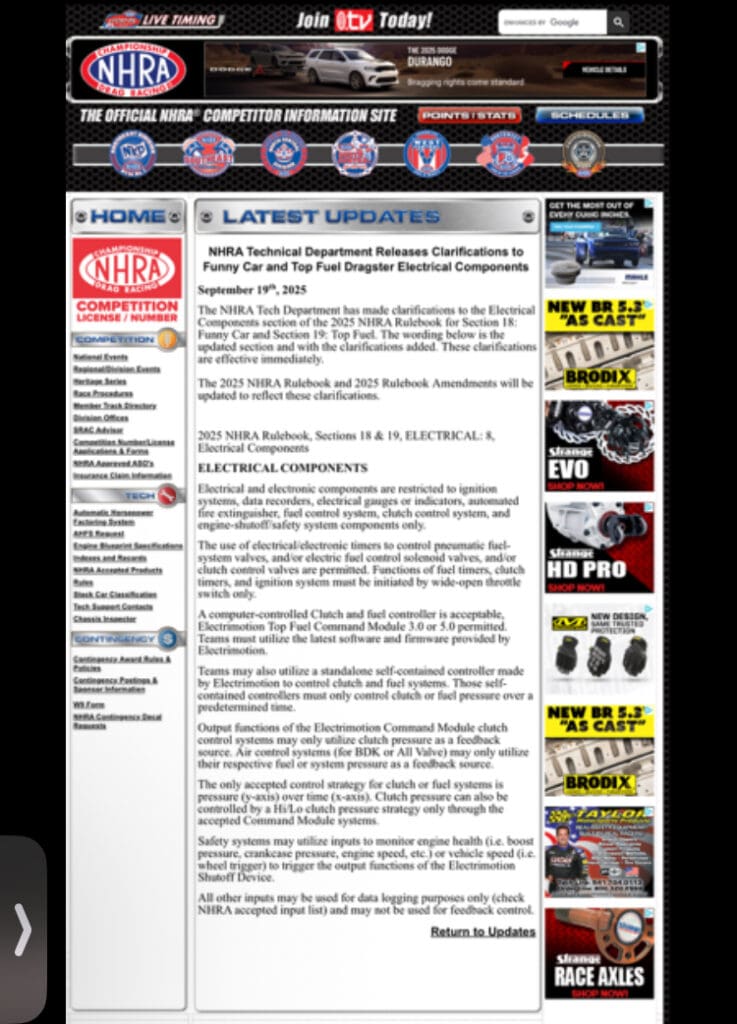
NHRA delivered a revised statement.
NHRA Technical Department Releases Clarifications to Funny Car and Top Fuel Dragster Electrical Components
September 19th, 2025
The NHRA Tech Department has made clarifications to the Electrical Components section of the 2025 NHRA Rulebook for Section 18: Funny Car and Section 19: Top Fuel. The wording below is the updated section with the clarifications added. These clarifications are effective immediately.
The 2025 NHRA Rulebook and 2025 Rulebook Amendments will be updated to reflect these clarifications.
2025 NHRA Rulebook, Sections 18 & 19, ELECTRICAL: 8, Electrical Components
ELECTRICAL COMPONENTS
Electrical and electronic components are restricted to ignition systems, data recorders, electrical gauges or indicators, automated fire extinguisher, fuel control system, clutch control system, and engine-shutoff/safety system components only.
The use of electrical/electronic timers to control pneumatic fuel-system valves, and/or electric fuel control solenoid valves, and/or clutch control valves are permitted. Functions of fuel timers, clutch timers, and ignition systems must be initiated by wide-open throttle switch only.
A computer-controlled clutch and fuel controller is acceptable, Electrimotion Top Fuel Command Module 3.0 or 5.0 permitted. Teams must utilize the latest software and firmware provided by Electrimotion.
Teams may also utilize a standalone self-contained controller made by Electrimotion to control clutch and fuel systems. Those self-contained controllers must only control clutch or fuel pressure over a predetermined time.
Output functions of the Electrimotion Command Module clutch control systems may only utilize clutch pressure as a feedback source. Air control systems (for BDK or All Valve) may only utilize their respective fuel or system pressure as a feedback source.
The only accepted control strategy for clutch or fuel systems is pressure (y-axis) over time (x-axis). Clutch pressure can also be controlled by a Hi/Lo clutch pressure strategy only through the accepted Command Module systems.
Safety systems may utilize inputs to monitor engine health (i.e., boost pressure, crankcase pressure, engine speed, etc.) or vehicle speed (i.e., wheel trigger) to trigger the output functions of the Electrimotion Shutoff Device.
All other inputs may be used for data logging purposes only (check NHRA accepted input list) and may not be used for feedback control.
The differences, as analyzed, were clarified by NHRA’s second statement.
Components Allowed:
Original: ignition components, gauges, alternator, extinguisher, clutch, fuel, etc.
Revised: ignition systems, automated extinguisher, and adds engine-shutoff/safety systems.
Timer Rules:
Original: bans fuel/clutch timers, delay devices, launch control, wheel/driveshaft sensors.
Revised: permits timers if triggered by a wide-open throttle (WOT) switch.
Electrimotion Modules:
Original: Fuel Tech External Module 3 or 3+ programmed by Electromotion allowed.
Revised: Only Electrimotion Top Fuel Command Module 3.0 or 5.0, must use latest firmware.
Standalone Controllers:
Original: Allowed if NHRA-approved.
Revised: Must only control clutch or fuel pressure over time.
Feedback/Control:
Original: banned most feedback functions.
Revised: defines accepted strategy: pressure (y-axis) over time (x-axis), Hi/Lo clutch pressure allowed.
Sensors & Safety Systems:
Original: allows engine health sensors, bans driveshaft/vehicle output sensors.
Revised: allows vehicle speed inputs (wheel trigger) to activate shutoff devices.
Data Logging:
Original: “input by the data logger, logging programs only.”
Revised: “inputs may be used for data logging purposes only.”
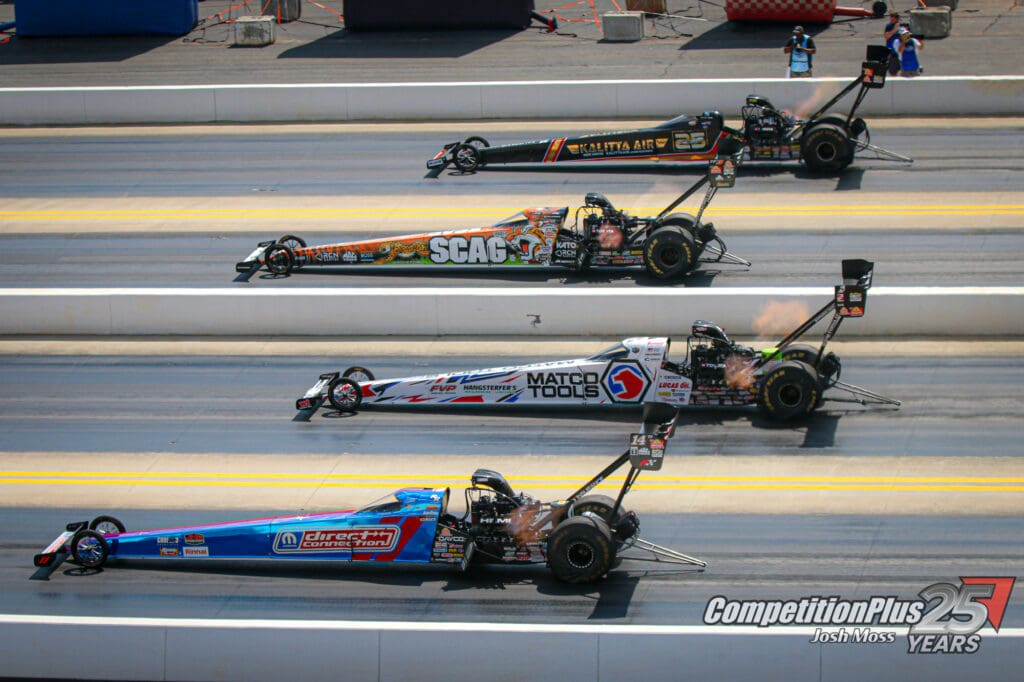
Essentially, NHRA has reminded nitro racers that any system that senses tire slip and makes automatic adjustments during a run is prohibited. The rule targets electronics, ignition systems, and sensors that could manage power without the driver’s input.
NHRA has been steadfast that wheel speed and driveshaft sensors are only for use in data logging after the run and cannot be manipulated during the pass. Any attempt to use the data for live alteration of ignition timing, fuel curves, clutch applications, or even automatic adjustments based on tire temperature drifts outside of acceptable use.
The same principle applies to clutch management. Teams are limited to timers and pneumatic controls before a run, but they can only operate on what is programmed ahead. This means a clutch cannot apply to any item, including tire temperature or any other variable that might come into play.
CompetitionPlus.com talked to multiple crew chiefs based on NHRA’s statement, and the consensus is if the device reacts automatically to variables during the run, it’s not legal for NHRA competition.
CompetitionPlus.com has reached out to the Technical Department via the NHRA Media Relations department for clarification of the device discovered in the post-race tech inspection and whether the unapproved item provided a performance advantage. Almost eight hours after the CompetitionPlus.com inquiry, the question remains unanswered.
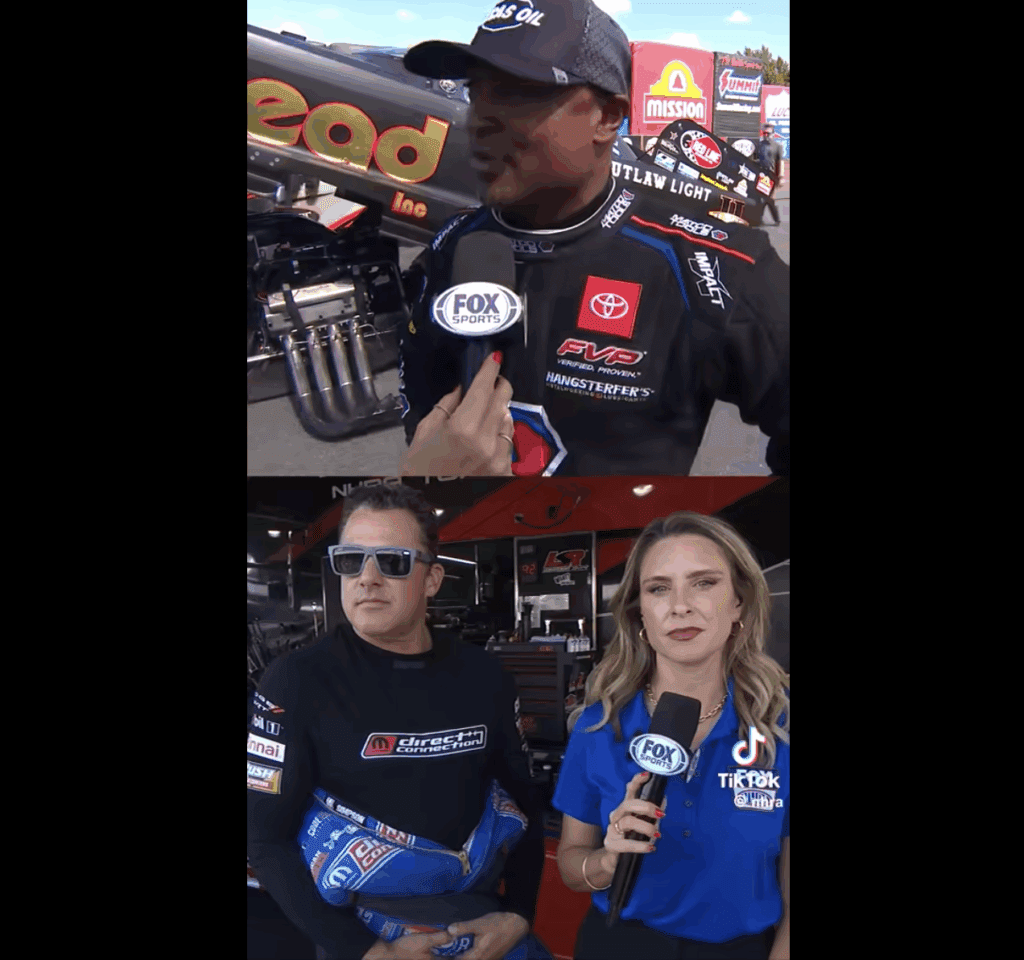
When Brown blew the whistle on the whole scenario, it effectively opened the floodgates of the fuel pits, which were once content being tight-lipped.
“People have got different things, and I just really like to see what’s going on with some different stuff out there,” Brown told Fox Sports’ Amanda Busick. “A lot of racers are talking out there with some unapproved devices, so I’d just like to see what that’s all about and what’s really happening out there, who’s got them, and what’s happening. Everybody knows who’s got them. We’d just like to know and have a little bit more clarity on that. And because the chips are high, competitions are high, and we’re all out here just trying to get a round win, and it’s hard to make it happen when you have competition this tight and other people have unfair advantages.”
Initially, Brown kept his statement vague, but when pressed by Busick, put names with the accusations.
“We know from a standpoint on the PRO side that the TSR team with Tony Stewart had some unapproved device on their car and got kicked out, and we just don’t know what it is,” Brown continued. “We just like to know what it is and what it did and what it does. Just a little bit more clarity on it, and that’s what makes this sport what it is—how close this competition is and all the hard work that we spend money, testing, making our vehicles go up and down the racetrack—and we just want to keep a level playing field for everybody.”
Stewart was given the opportunity to comment on Brown’s words.
“Well, I got a ton of respect for Antron, obviously,” Stewart said. “I mean, that’s why on the PRO board, we all voted him to vice president, so I got a ton of respect for him. But I’d love to sit there and know what everybody in the pit area has in their cars. But that’s why we have a sanctioning body that has a tech department. So, no different than anybody else that’s had runs thrown out because of things. That’s why they have tech.
“Everybody’s got to remember, we have Dodge as a partner; it’s an OEM, so there’s nothing going to be on this race car that we absolutely know that we are doing the wrong thing. So everybody and every sanctioning body and every form of motorsports takes the rulebook they’re given and looks for the gray areas and tries to find how to maximize everything they can do.
“And every team in here does that. But I can promise you, we didn’t have anything on this car that we felt like was just blatantly illegal. So I appreciate Antron’s passion and everybody else in this pit area, but they can come tear this thing down anytime they want. They’re more than welcome to it.
“I just wish Antron, if he was that upset, he’d have come and talked to us about it. But I respect him, and I respect this sport and the people in it, but that’s why we have a tech department. So it’s our job to sit there and build these things to go as fast as we can make them go. And right now, we’re just going to worry about this next round.”
The controversy has now spilled beyond the pits and into the public eye, raising questions not only about the legality of specific components but also about the consistency of what a number of crew chiefs view as NHRA’s enforcement and communication.
Until the sanctioning body provides clarity, the debate will remain unsettled, leaving competitors and fans alike to wonder whether this is an isolated infraction or the first crack in a much larger fault line running through nitro racing.





